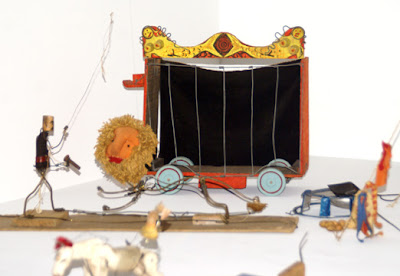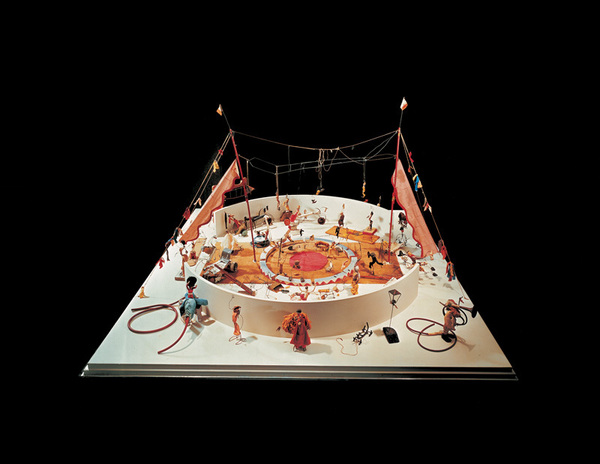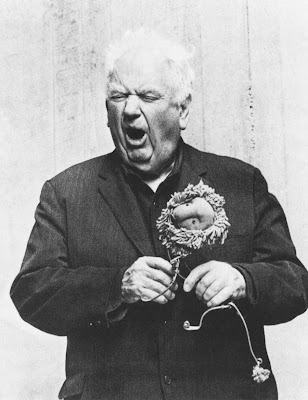Feb 5, 2013 | painting, sculpture
I’ve always found the whole “paragone” thing so interesting. Paragone is the Italian Renaissance word for the competition between different media, often referred to as the competition between the arts. In the contemporary art world the idea doesn’t really translate since media are often crossed over and blended, either in one image on a computer or physically in one place. Most artists today refuse to classify as themselves as a “painter” or a “sculptor,” but I really feel like the limitations of traditional media force artists to push themselves and their craft in a way that doesn’t happen often anymore.
When artists broaden their scope to include anything and everything – concepts from every range of the human experience along with every kind of media available – there isn’t the obsessive, hyper-attuned focus that’s needed to create something powerful. All good works have to have something obsessive about them, whether it’s one idea or one media. Before photography that obsessive bit usually involved an incredible faithfulness to reality.
 |
| Triple Portrait of Cardinal de Richelieu by Philippe de Champaigne and studio, c. 1642 |
During the Italian Renaissance when this word was floated across the lofty circles of artists and patrons, that competition of the paragone was completely focused on the work’s faithfulness to reality. These patrons were paying scudi by the thousand so that us, the people who live thousands of years later, could still remember what they looked like.
The portrait bust below was completed after Bernini’s model of Cardinal Richelieu, a portrait the Cardinal didn’t sit for. Bernini created the sculpture solely from examining the painting of the Cardinal above, sent to him and completed by Philippe de Champaigne. Bernini was known to be actively involved in the paragone discussion, and this opportunity to create a portrait sculpture purely from a painting is often seen as one of the best examples of Bernini proving sculptures place among the arts.
 |
White Marble Bust of Cardinal Richelieu, after the model by Gianlorenzo Bernini
French, mid 19th century, from Christies
|
Although the painting of Cardinal Richelieu lights up the screen with all its color, at a time when works couldn’t just be reproduced a million times over, I imagine sculpture would have been the more impressive medium. It know it’s a lot easier for me to connect with an object that exists in my space rather than in a set scene somewhere far away. But painting also allows for more possibility – it can take you out of your space to an impossible one, while sculpture is limited physically, in the same ways we are.
What do you think: painting or sculpture?
GD Star Rating
loading...
Oct 14, 2012 | art history, news
Even though Jacques-Louis David (pronounced Daaav-EED, I know, it’s French and weird) was considered to be the greatest painter of the 18th century. A Frenchman who worked mostly in a neoclassicist style, he’s not much discussed in my art history classes aside from “the guy who painted ‘The Death of Marat’.”
Surprisingly though, his history painting “Oath of the Horatii” is what comes up first under his Google artwork page, depicting a scene in early Rome where three brothers agree to sacrifice their lives for the city, placing civic loyalty over everything else. These historical themes were useful for David, as a vehicle to actively support the French Revolution, since loyalty to state is what’s most important here too.
 “The Death of Marat,” number two for David according to Google, also has ties to the Revolution and is said to be the most well-known image that came from it. Jean-Paul Marat was a French revolutionary leader and journalist who had a skin condition that was helped by a bath. Which is why here he lies in the tub, holding out a piece of paper that in French reads, Because I am unhappy, I have a right to your help.”
“The Death of Marat,” number two for David according to Google, also has ties to the Revolution and is said to be the most well-known image that came from it. Jean-Paul Marat was a French revolutionary leader and journalist who had a skin condition that was helped by a bath. Which is why here he lies in the tub, holding out a piece of paper that in French reads, Because I am unhappy, I have a right to your help.”
Marat was stabbed in the bath by his political enemy Charlotte Corday who did not bother fleeing and was eventually tried and executed for his murder. You can’t see her here in the painting, but her name is also written on the piece of paper Marat holds, as he’s writing with his last breaths – a martyr for the Revolution.
Napoleon Crossing the Alps comes in at number three for David on Google, showing the breadth of his political alignment throughout his career and life – he aligned with the new ruler after being imprisoned.
 |
| Oath of the Horatii, 1784, Louvre |
 |
| Death of Marat, 1793, Royal Museums of the Fine Arts of Belgium |
 |
| Napoleon Crossing the Alps, 1800, Château de Malmaison |
And now it’s a happy art history Sunday!
GD Star Rating
loading...
Feb 28, 2012 | installation, sculpture, The Whitney Museum
 |
|
Lion and Cage from Calder’s Circus, 1926-31, from thecityreview.com |
Wire and fancy. That’s how I would describe this piece, or pieces rather. Three huge sets of miniature circus performers made of made of metal, wire, fabric, and yarn. A metal plated kangaroo the size of my hand rolls on ribbed washers. A clown wearing multi-colored layers topped by a lion coat has an almost ironically painted smile of red on his small wooden face. A lion with a plush face, yarn mane, and wire body is being tamed outside his cage by his wire-bodied master. And there’s tight-rope walkers, cowboys, acrobats, sword swallowers, everything expected of a circus setting, even the ringnmaster. I think I like it so much because there’s something about the idea of the circus that lends itself to being portrayed through this fanciful, although unglamorous, medium of wire.
 |
| Calder’s Circus, 1926-31, from the Whitney Museum of Art’s website. |
 |
| Alexander Calder, Roaring with his Circus Lion, 1971, from kaufmann-mercantile.com . |
GD Star Rating
loading...














